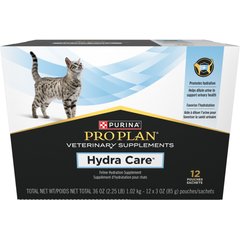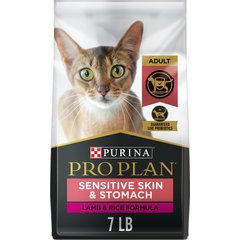Inherited Skin Disease in the Persian Cat
Feline Idiopathic Seborrhea
Persian cats are known to inherit a disorder called idiopathic seborrhea. This primary skin disease leads to overproduction of an oily, waxy substance by the skin glands, which clumps in the fur and causes a bad smell.
Though often seen in Persians, seborrhea can affect various breeds of cat and typically in the same way -- the skin becomes red and irritated, which leads to scratching and further cellular damage.
Symptoms and Types
There are two common forms of seborrhea: seborrhea sicca, in which the skin becomes more dry and flaky; and seborrhea oleosa, in which the skin becomes more oily. Most animals with inherited seborrhea have a combination of the two forms.
Seborrhea in cats tends to affect the skin along the back and around the eyes and ears. It also causes irritation in those areas where the skin folds, such as in the armpits; on the underside; around legs; and on the face, feet, and neck.
Vet Recommended Health Support
- Feliway Optimum Enhanced Calming 30 Day Diffuser for Cats$29.99Chewy Price
- Purina Pro Plan Veterinary Diets FortiFlora Powder Probiotic Digestive Supplement for Cats, 30 count$30.99Chewy Price
- Purina Pro Plan Veterinary Diets Hydra Care Liver Flavored Liquid Supplement for Cats, 3-oz pouch, case of 12$14.99Chewy Price
- Purina Pro Plan Adult Sensitive Skin & Stomach Lamb & Rice Formula Dry Cat Food, 7-lb bag$28.08Chewy Price
Causes
In the primary (also called idiopathic, or unknown) form of the inherited disease, the cause of seborrhea is unknown. In the case of a secondary seborrhea, the cause may be due to an underlying problem, which can include:
- Parasites
- Fungal infections
- Allergies
- Dietary problems
- Endocrine disorders
- Obesity
Diagnosis
Your veterinarian will do a physical examination and check your cat for any disease that may cause a secondary seborrhea. Tests that may be used include:
- Chemistry panel
- Complete blood count (CBC)
- Hormone analysis
- Skin scraping
- Bacterial culture
- Fungal culture
- Skin biopsy
Once every other potential cause of the condition is ruled out, a diagnosis of primary idiopathic seborrhea can be made. If your cat is a Persian, the vet will have an even easier time making the diagnosis, as they are prone to idiopathic seborrhea.
Treatment
As it is not possible to cure idiopathic seborrhea, treatment will mainly focus on controlling the condition. This may include using a combination of shampoos and conditioners to control the amount of oily buildup and calm the itchy skin. Your veterinarian may also prescribe oral vitamin or fatty acid supplements.
If your cat contracts a secondary infection, other therapies such as antibiotics (oral and topical), antifungals, and sometimes allergy medications may be necessary.
Living and Management
Keep your pet clean and well hydrated. This will help control the condition and reduce the chances that a secondary infections develop. In addition, schedule regular follow-up exams with your veterinarian to monitor the cat's skin condition.



